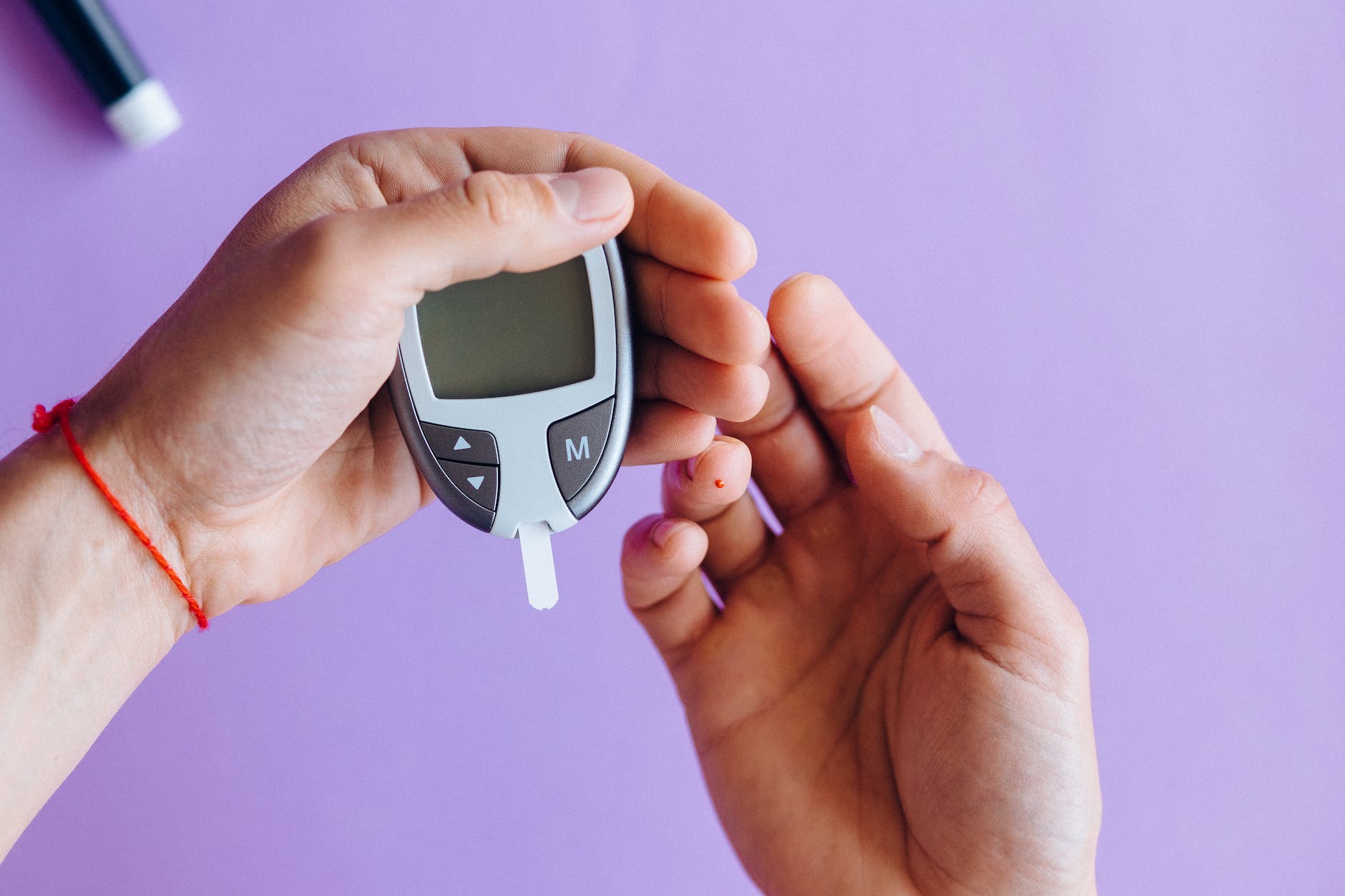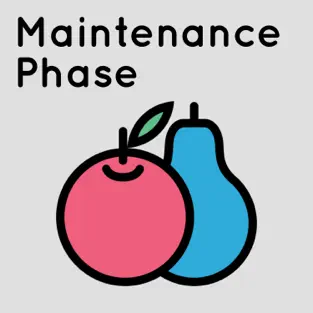Introduction:
High blood pressure, also known as hypertension, is a serious medical condition that affects millions of people worldwide. This book aims to provide a comprehensive guide to help readers understand high blood pressure, its causes, symptoms, and treatment options.
Chapter 1: What is High Blood Pressure?
This chapter will explain what high blood pressure is and how it is measured. It will also discuss the various types of hypertension, including primary hypertension and secondary hypertension.
High blood pressure, also known as hypertension, is a condition in which the force of blood against the walls of the arteries is consistently too high. This can lead to a variety of health problems, including heart disease, stroke, kidney disease, and vision loss.
Blood pressure is measured in millimeters of mercury (mmHg) and is typically expressed as two numbers: systolic pressure and diastolic pressure. Systolic pressure is the top number and represents the pressure when the heart contracts and pumps blood into the arteries. Diastolic pressure is the bottom number and represents the pressure when the heart relaxes between beats.
A blood pressure reading of 120/80 mmHg or lower is considered normal, while a reading of 130/80 mmHg or higher is considered high. Prehypertension is a stage where the blood pressure is higher than normal but not yet high enough to be diagnosed as hypertension.
Types of Hypertension
There are two main types of hypertension: primary hypertension and secondary hypertension.
Primary hypertension, also known as essential hypertension, is the most common type of hypertension and has no known cause. It often develops gradually over time and can be influenced by a variety of factors, including genetics, age, and lifestyle.
Secondary hypertension, on the other hand, is caused by an underlying medical condition such as kidney disease, thyroid problems, or sleep apnea. It can also be caused by certain medications, such as birth control pills, decongestants, and steroids. Unlike primary hypertension, secondary hypertension may resolve once the underlying condition is treated.
In addition to these two main types, there are also other forms of hypertension, including white-coat hypertension and masked hypertension. White-coat hypertension occurs when a person’s blood pressure is consistently high when measured in a medical setting, but normal when measured at home. Masked hypertension, on the other hand, occurs when a person’s blood pressure is normal when measured in a medical setting, but consistently high when measured at home.
Understanding the different types of hypertension and their causes is an important step in managing high blood pressure. By working with a healthcare provider, individuals can develop a treatment plan that addresses the underlying cause of their hypertension and reduces their risk of developing serious health complications.
Chapter 2: Causes of High Blood Pressure
This chapter will explore the various factors that can contribute to high blood pressure, including age, genetics, lifestyle choices, and medical conditions.
There are several factors that can contribute to the development of high blood pressure, including age, genetics, lifestyle choices, and medical conditions.
Age: Blood vessels become stiffer as people age, which can lead to an increase in blood pressure.
Genetics: High blood pressure can run in families, suggesting that genetics may play a role in its development.
Lifestyle choices: Unhealthy lifestyle choices can contribute to the development of high blood pressure. These include:
Diet: A diet high in sodium, saturated and trans fats, and cholesterol can increase the risk of developing high blood pressure.
Lack of physical activity: Regular exercise can help lower blood pressure and improve overall health.
Excessive alcohol consumption: Drinking too much alcohol can lead to high blood pressure.
Smoking: Nicotine in cigarettes can cause blood vessels to narrow, which can increase blood pressure.
Medical conditions: Certain medical conditions can contribute to the development of high blood pressure, including:
Kidney disease: Kidneys play a crucial role in regulating blood pressure, and damage to the kidneys can lead to hypertension.
Adrenal gland disorders: The adrenal glands produce hormones that regulate blood pressure, and disorders of the adrenal glands can lead to hypertension.
Thyroid problems: Both hypothyroidism and hyperthyroidism can lead to high blood pressure.
Sleep apnea: Sleep apnea is a condition in which breathing is repeatedly interrupted during sleep. It has been linked to high blood pressure.
Diabetes: People with diabetes are at an increased risk of developing high blood pressure.
Understanding the various factors that can contribute to the development of high blood pressure is an important step in managing and preventing hypertension. By making healthy lifestyle choices and working with a healthcare provider to manage any underlying medical conditions, individuals can lower their risk of developing hypertension and its associated health complications.
Chapter 3: Symptoms and Complications of High Blood Pressure
This chapter will discuss the common symptoms of high blood pressure, as well as the potential complications that can arise if hypertension is left untreated. It will also cover the link between high blood pressure and other health conditions such as stroke, heart disease, and kidney failure.
High blood pressure is often referred to as the “silent killer” because it often does not cause symptoms until it has reached a severe stage. However, there are some symptoms that can occur with high blood pressure, including:
Headaches
Dizziness
Shortness of breath
Chest pain
Visual changes
Nausea and vomiting
Blood in the urine
In some cases, high blood pressure can lead to serious health complications, including:
Heart disease: High blood pressure can damage the arteries that supply blood to the heart, increasing the risk of heart disease, heart attack, and heart failure.
Stroke: High blood pressure can damage the arteries that supply blood to the brain, increasing the risk of stroke.
Kidney disease: High blood pressure can damage the kidneys, leading to kidney disease and kidney failure.
Vision loss: High blood pressure can damage the blood vessels in the eyes, leading to vision loss.
Sexual dysfunction: High blood pressure can reduce blood flow to the genitals, leading to sexual dysfunction.
It is important to note that these complications can be prevented or minimized with proper management and treatment of high blood pressure. This includes making lifestyle changes such as eating a healthy diet, getting regular exercise, and quitting smoking, as well as taking medications as prescribed by a healthcare provider.
Chapter 4: Diagnosing High Blood Pressure
This chapter will explain the various methods used to diagnose high blood pressure, including blood pressure readings, urine tests, and other diagnostic tests.
Diagnosing high blood pressure typically involves measuring blood pressure in both arms while a person is at rest. In some cases, additional tests may be performed, such as urine tests or blood tests, to determine if there is an underlying medical condition contributing to hypertension.
Once diagnosed, treatment for high blood pressure typically involves a combination of lifestyle changes and medication. Lifestyle changes may include:
Eating a healthy diet low in sodium, saturated and trans fats, and cholesterol
Getting regular exercise
Quitting smoking
Limiting alcohol consumption
Medications may include:
Diuretics: These medications help the body get rid of excess sodium and water, reducing blood volume and lowering blood pressure.
ACE inhibitors: These medications help relax blood vessels and reduce blood pressure.
Calcium channel blockers: These medications help relax blood vessels and reduce blood pressure.
Beta blockers: These medications help reduce heart rate and blood pressure.
It is important to work with a healthcare provider to determine the best course of treatment for high blood pressure, as individual treatment plans may vary depending on the severity of hypertension and any underlying medical conditions.
Conclusion:
High blood pressure is a common condition that can lead to serious health complications if left untreated. By understanding the causes, symptoms, and complications of high blood pressure, as well as the importance of early diagnosis and proper management, individuals can take steps to reduce their risk of developing hypertension and its associated health problems.
Chapter 5: Treatment Options for High Blood Pressure
This chapter will explore the various treatment options available for high blood pressure, including lifestyle changes, medication, and surgery. It will also discuss the importance of monitoring blood pressure and working closely with a healthcare provider to manage hypertension.
Effective management of high blood pressure often requires a combination of lifestyle changes, medication, and regular monitoring. Here are some of the treatment options available for high blood pressure:
Lifestyle changes: Making lifestyle changes such as maintaining a healthy diet, engaging in regular exercise, and quitting smoking can help lower blood pressure and prevent hypertension from developing.
Medication: If lifestyle changes alone are not enough to control high blood pressure, medication may be prescribed. There are several classes of medications available to treat high blood pressure, including diuretics, ACE inhibitors, calcium channel blockers, and beta-blockers. It is important to take medication as prescribed by a healthcare provider and to follow up regularly to monitor the effectiveness of the medication and make any necessary adjustments.
Surgery: In rare cases, surgery may be recommended to treat high blood pressure. This may include renal artery stenosis surgery or angioplasty.
Regular monitoring: Regular blood pressure monitoring is crucial to effectively manage high blood pressure. This can be done at home using a blood pressure monitor, or through regular check-ups with a healthcare provider.
Working closely with a healthcare provider: It is important to work closely with a healthcare provider to manage high blood pressure. A healthcare provider can help develop a personalized treatment plan that takes into account an individual’s unique medical history, lifestyle factors, and other health conditions. It is important to attend regular check-ups and to communicate any concerns or changes in symptoms to a healthcare provider.
By using a combination of these treatment options, individuals with high blood pressure can effectively manage their condition and reduce the risk of serious health complications. It is important to remember that managing high blood pressure is an ongoing process that requires dedication and a commitment to making healthy lifestyle choices.
While some factors that contribute to high blood pressure are beyond our control, there are steps that can be taken to prevent or delay the development of hypertension. These include:
Maintaining a healthy weight: Being overweight or obese increases the risk of developing high blood pressure. By maintaining a healthy weight through a balanced diet and regular exercise, the risk of hypertension can be reduced.
Eating a healthy diet: A diet rich in fruits, vegetables, whole grains, and lean protein can help reduce the risk of high blood pressure. It is also important to limit sodium, saturated and trans fats, and cholesterol in the diet.
Regular exercise: Regular physical activity can help lower blood pressure and improve overall health. The American Heart Association recommends at least 150 minutes of moderate-intensity exercise per week.
Limiting alcohol consumption: Drinking too much alcohol can raise blood pressure. The American Heart Association recommends no more than one drink per day for women and no more than two drinks per day for men.
Quitting smoking: Nicotine in cigarettes can cause blood vessels to narrow, increasing blood pressure. Quitting smoking can help lower blood pressure and improve overall health.
By making these lifestyle changes, individuals can reduce their risk of developing high blood pressure and its associated health complications. It is important to work with a healthcare provider to determine the best course of action for preventing hypertension, especially for individuals with a family history of high blood pressure or other risk factors.
Chapter 6: Living with High Blood Pressure
Effective management of high blood pressure requires a multifaceted approach, including lifestyle changes such as diet and exercise, medication as prescribed by a healthcare provider, and regular monitoring to ensure that blood pressure is under control. It is essential to work closely with a healthcare provider to develop a personalized treatment plan that takes into account an individual’s unique medical history, lifestyle factors, and other health conditions. By working together, individuals with high blood pressure can effectively manage their condition and reduce the risk of serious health complications.
In addition to following a healthy lifestyle and taking medication as prescribed, there are steps individuals can take to manage high blood pressure on a daily basis. These include:
Monitoring blood pressure regularly: Regular monitoring of blood pressure can help detect changes in blood pressure and ensure that medications are working effectively.
Keeping track of medications: It is important to take medications as prescribed and to keep track of when they need to be refilled.
Managing stress: Stress can raise blood pressure, so finding healthy ways to manage stress, such as exercise or relaxation techniques, can help reduce the risk of hypertension.
Following a healthy diet: Eating a diet low in sodium, saturated and trans fats, and cholesterol can help reduce blood pressure.
Getting regular exercise: Regular physical activity can help lower blood pressure and improve overall health.
By following these steps, individuals with high blood pressure can help manage the condition and reduce the risk of health complications.
Conclusion:
High blood pressure is a common condition that affects millions of people worldwide. While it can lead to serious health complications if left untreated, it can be managed through a combination of lifestyle changes and medication. By understanding the importance of prevention, diagnosis, and management of high blood pressure, individuals can take control of their health and reduce their risk of developing hypertension and its associated health problems.
Chapter 6: Preventing High Blood Pressure
This chapter will cover the steps that can be taken to prevent high blood pressure, including maintaining a healthy diet, engaging in regular exercise, and avoiding smoking and excessive alcohol consumption.
While high blood pressure can be managed with medication and lifestyle changes, the best approach is to prevent it from developing in the first place. There are several steps individuals can take to prevent high blood pressure, including:
Maintain a healthy diet: Eating a healthy diet rich in fruits, vegetables, whole grains, and lean proteins can help prevent high blood pressure. It is important to limit sodium and saturated fat intake, as these can increase blood pressure.
Engage in regular exercise: Regular physical activity, such as brisk walking, jogging, or cycling, can help lower blood pressure and prevent high blood pressure from developing. Aim for at least 30 minutes of moderate-intensity exercise most days of the week.
Maintain a healthy weight: Being overweight or obese can increase the risk of developing high blood pressure. Maintaining a healthy weight through diet and exercise can help prevent high blood pressure.
Avoid smoking: Smoking can damage the blood vessels and increase the risk of high blood pressure. Quitting smoking can help prevent high blood pressure and reduce the risk of other health complications.
Limit alcohol intake: Excessive alcohol consumption can increase blood pressure and damage the liver, heart, and brain. It is important to limit alcohol intake to no more than one drink per day for women and two drinks per day for men.
By making these lifestyle changes, individuals can significantly reduce their risk of developing high blood pressure. It is also important to monitor blood pressure regularly, as high blood pressure often has no symptoms and can go undetected for years. Regular check-ups with a healthcare provider can help detect high blood pressure early and allow for effective management and treatment.
Chapter 7: Living with High Blood Pressure
This chapter will provide practical advice for people living with high blood pressure, including tips for managing stress, maintaining a healthy weight, and keeping track of blood pressure readings.
Living with high blood pressure can be challenging, but there are many practical steps individuals can take to manage their condition and improve their overall health. Here are some tips for living well with high blood pressure:
Manage stress: Stress can increase blood pressure, so it is important to find ways to manage stress. This can include deep breathing exercises, yoga, meditation, or spending time doing activities that bring joy and relaxation.
Maintain a healthy weight: Being overweight or obese can increase the risk of developing high blood pressure, so maintaining a healthy weight is important. This can be achieved through a healthy diet and regular exercise.
Keep track of blood pressure readings: Regularly monitoring blood pressure readings at home can help individuals stay on top of their condition and make any necessary adjustments to their treatment plan. It is important to follow the healthcare provider’s recommendations for checking blood pressure at home.
Take medication as prescribed: If medication is prescribed to manage high blood pressure, it is important to take it as directed by a healthcare provider. Skipping doses or stopping medication without consulting a healthcare provider can lead to uncontrolled blood pressure and increase the risk of serious health complications.
Limit sodium intake: Sodium can increase blood pressure, so it is important to limit sodium intake in the diet. This can be achieved by avoiding processed foods and adding less salt to meals.
Limit alcohol intake: Excessive alcohol consumption can increase blood pressure, so it is important to limit alcohol intake to no more than one drink per day for women and two drinks per day for men.
By following these practical tips, individuals with high blood pressure can effectively manage their condition and reduce the risk of serious health complications. It is important to work closely with a healthcare provider to develop a personalized treatment plan that takes into account an individual’s unique medical history, lifestyle factors, and other health conditions.
Conclusion:
This book aims to provide readers with a comprehensive understanding of high blood pressure, its causes, symptoms, and treatment options. By learning more about this condition, readers can take steps to prevent hypertension, manage their blood pressure, and lead healthier lives.
High blood pressure, or hypertension, is a common health condition that affects millions of people worldwide. If left untreated, high blood pressure can lead to serious health complications such as heart attack, stroke, and kidney disease. However, with proper management, many individuals with high blood pressure are able to lead healthy, fulfilling lives.
One of the most effective ways to manage high blood pressure is through lifestyle changes such as maintaining a healthy diet, engaging in regular exercise, quitting smoking, and limiting alcohol intake. These changes can help lower blood pressure and prevent hypertension from developing.
In cases where lifestyle changes alone are not enough to control high blood pressure, medication may be prescribed. There are several classes of medications available to treat high blood pressure, and it is important to take medication as prescribed and to follow up regularly with a healthcare provider to monitor the effectiveness of the medication.
Regular blood pressure monitoring is crucial to effectively manage high blood pressure. Individuals with high blood pressure should work closely with a healthcare provider to develop a personalized treatment plan that takes into account their unique medical history, lifestyle factors, and other health conditions.
It is also important to remember that managing high blood pressure is an ongoing process that requires dedication and a commitment to making healthy lifestyle choices. By making small, consistent changes over time, individuals with high blood pressure can improve their overall health and reduce the risk of serious health complications.




